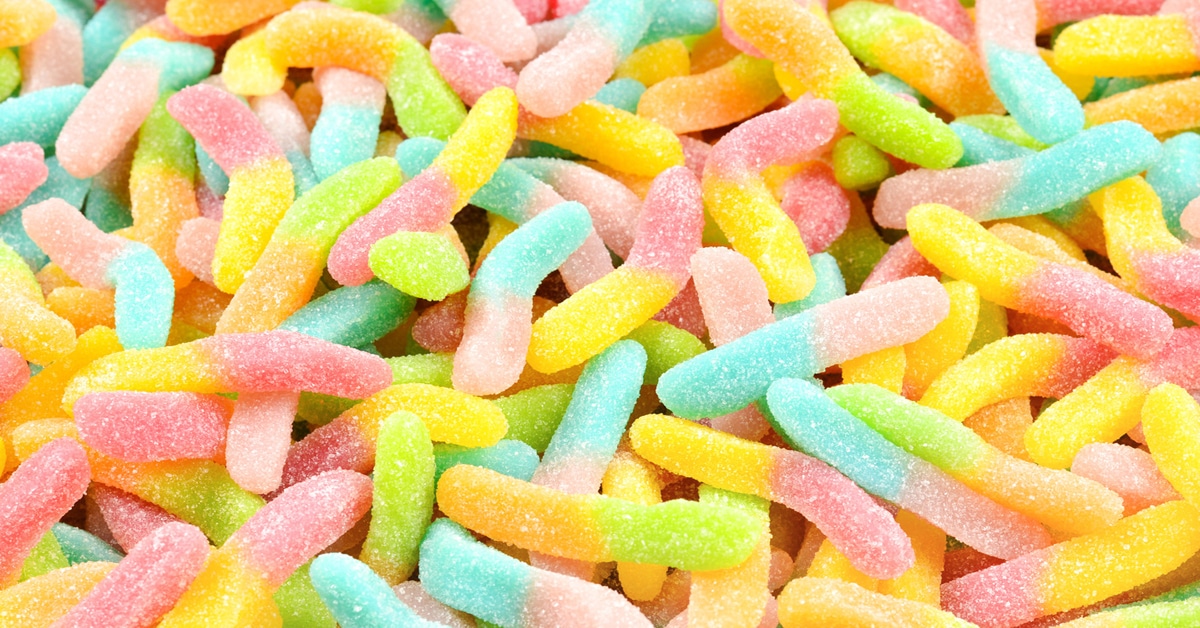80s Gum – Nostalgia Of Loved and Adored Candies
There are a ton of creative items available in the gum and candy industries. Since Black Jack, Beemans, and Clove first appeared on the market more than a century ago, the 80s gum and candy brands have been tremendously diversified, ranging from novelty delights in odd forms, sizes, and tastes to promotional candies.
We’ve selected 8 of the most enduring or peculiar of those lost sweets to honor the lengthy history of delightful 80s gum candy.
Please leave a review or any memories of this snack in the comments at the bottom of this page. Thank you!
Names of 80s Gum
- Bazooka Bubble Gum
- Gummy Worms
- Freshen Up Gum
- Juicy Fruit
- Dentyne Chewing Gum
- Beech-Nut Gum
- P.K Gum
- Hubba-Bubba Bubble Gum
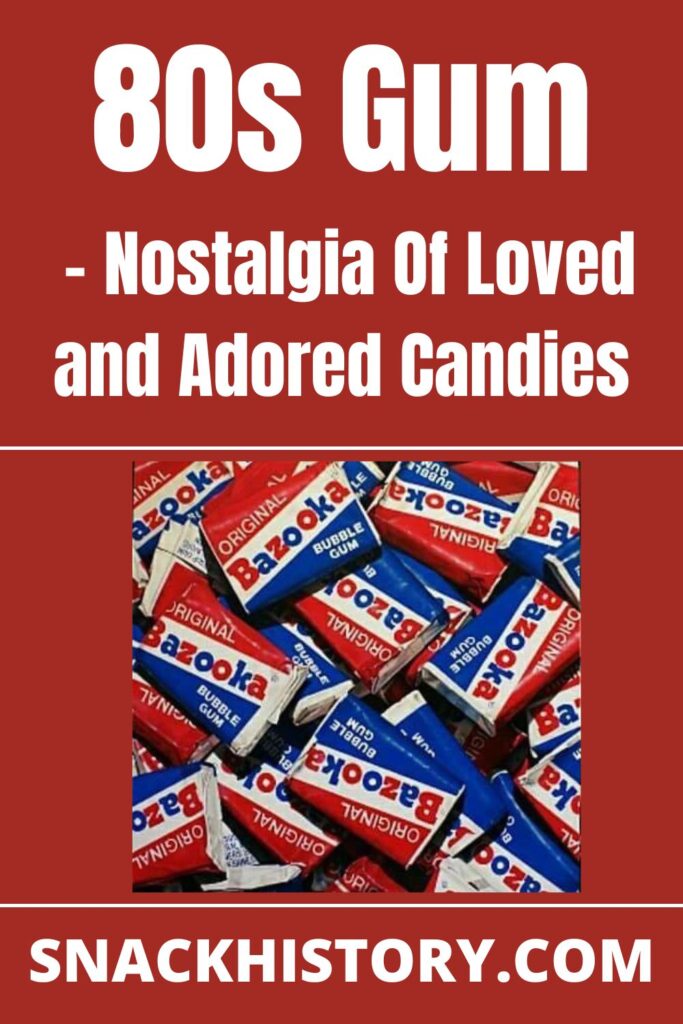
8 Most Popular 80s Gum We All Miss
1. Bazooka Bubble Gum
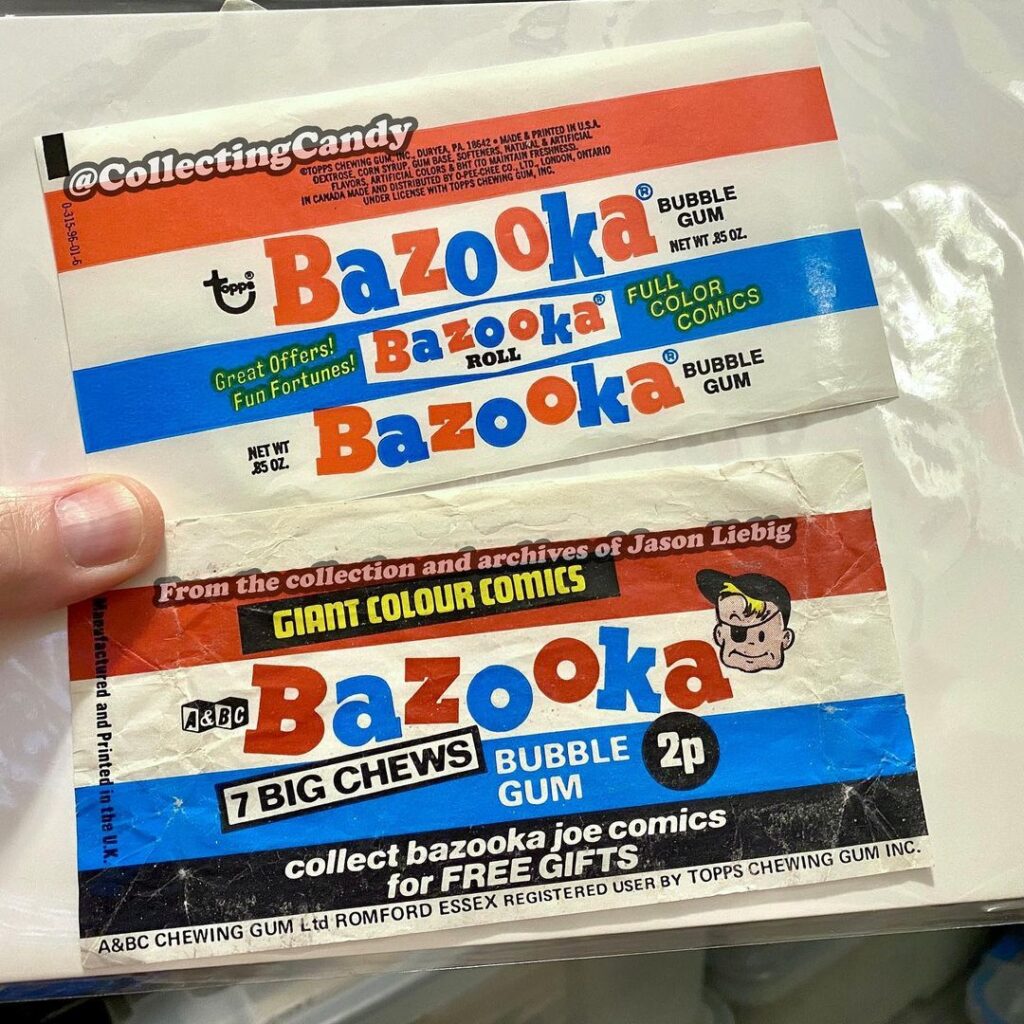
Even though Bazooka Bubble Gum was first manufactured in 1947, its popularity skyrocketed in the following decades, and the candy eventually became popular 80s gum. Bazooka Candy Brands, a unit of Topps Company Inc., produced the gum. After World War II, the gum was initially produced and distributed in Brooklyn, New York. This 80s gum was probably named after the US Army employed a rocket-like weapon throughout the conflict. This was the codename for the weapon, which was, in turn, named after a musical instrument.
Bazooka Bubble Gum featured all of the comics within the wrappers that represented Bazooka Joe, and occasionally a toy was also included.
Later, they added Watermelon Whirl, Cherry Berry, Grape Rage, and Strawberry Shake to the original flavor. The gum is now available in sugar-free and flavor-blast varieties, both of which have lasting flavors for your enjoyment.
2. Gummy Worms
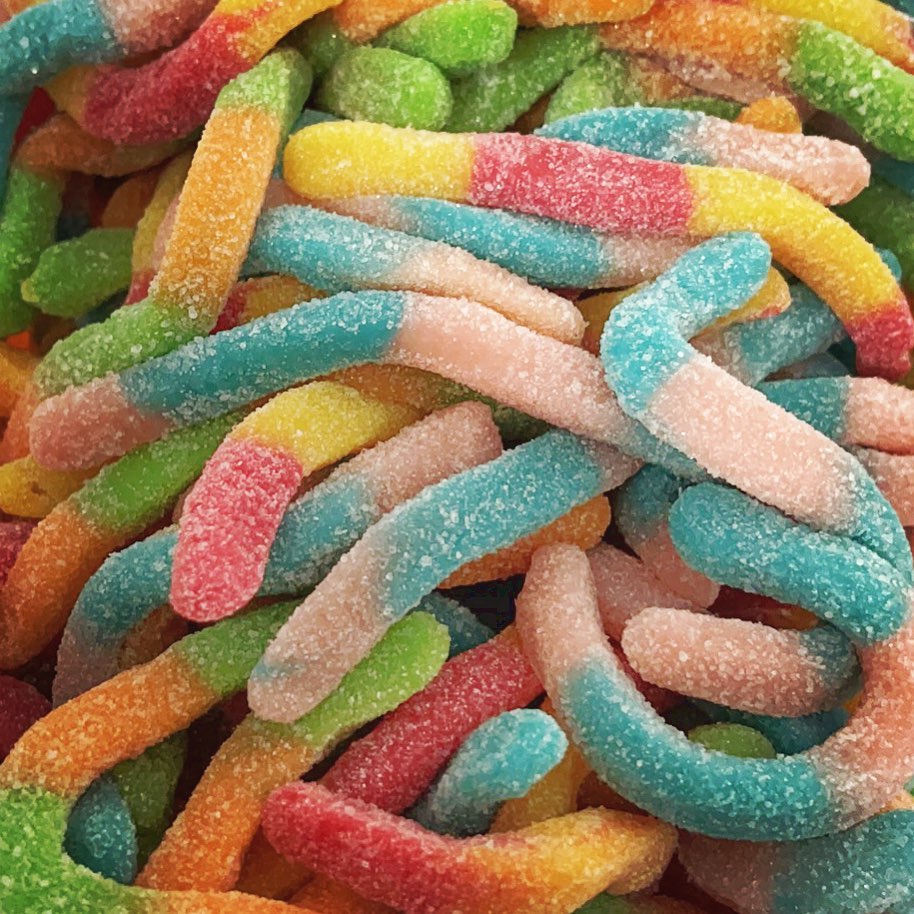
The first Gummy Worms was created on July 15, 1981. This delicious gelatin-based 80s gum is vibrant and colorful. It leaves a simultaneously sweet and acidic taste and is simple to chew.
The sugar powder that coats the Gummy Worms dissolves on contact with the tongue. The result tastes like nirvana since the sweet and salty flavors are perfectly balanced. Cherry-lemon, strawberry-grape, and orange-lime were the original tastes. Gelatin and carnauba wax are the candy’s two primary components. The design of this 1980s gum, which resembles a worm, made it particularly popular among kids.
3. Freshen Up Gum
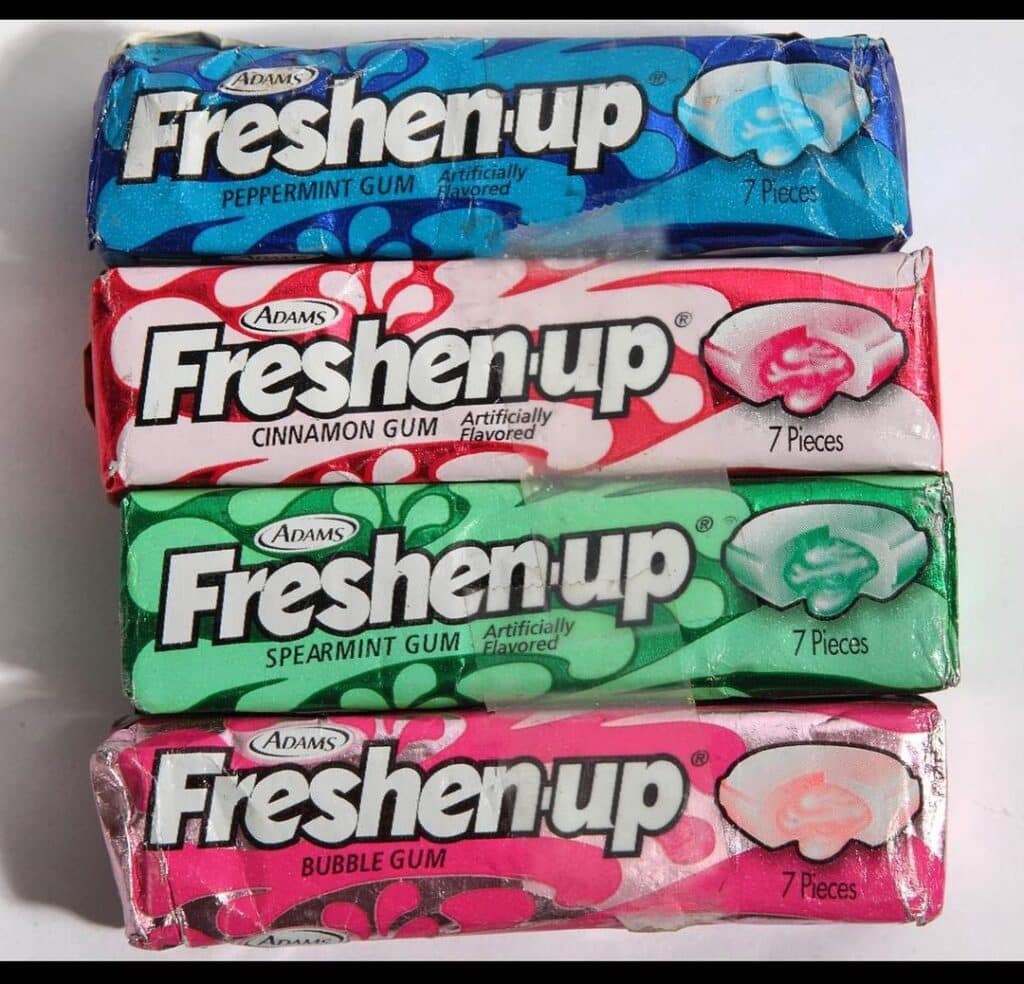
In 1975, Freshen Up Gum made its debut on the market, complete with vibrant colors, outrageous and provocative advertising campaigns, and a variety of tastes. Every piece of gum in the product was said to include a soft gel core that produced “flavor waves.” Freshen-up gum definitely captivated society and became iconic 80s gum.
There was no denying that the inside gel layer was a novel twist compared to the stick or tape-style gums that were much more prevalent at the time. The outsides of the pieces of gum were occasionally plain and other times striped and alluring. Even block or square-shaped gum was becoming less popular at the time, so a gum cube with a squishy inside was truly unique.
The American Chicle was the company that first attempted to create this strip-style chewing gum. After all, the name was still associated with gum in the form of cubes in small blister packets rather than the strip-style gums that the majority of companies produce.
4. Juicy Fruit
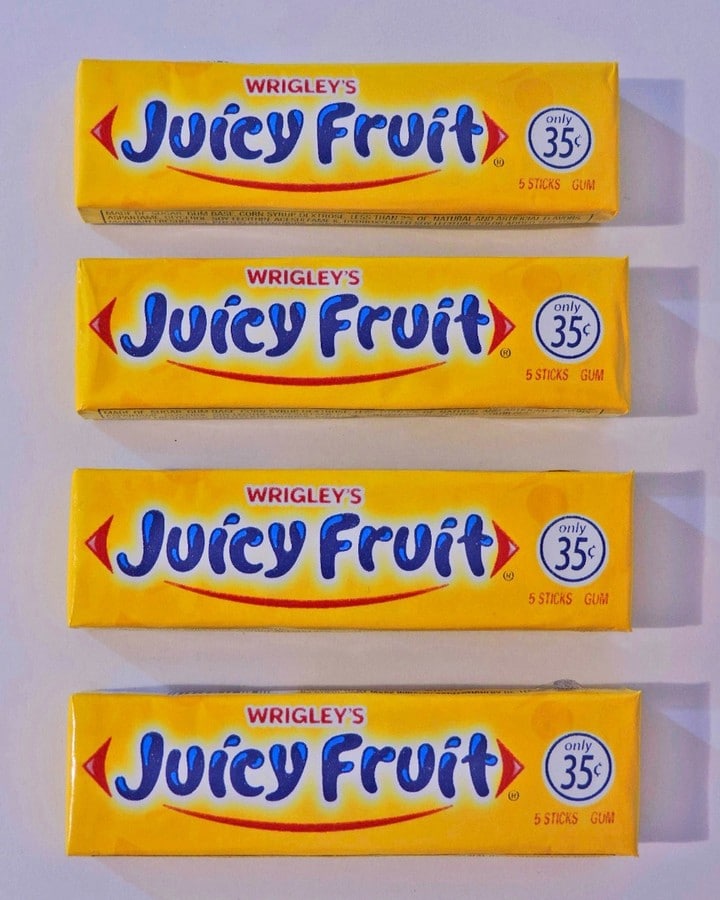
The Wrigley Company, a US company that has been a division of the privately held Mars, Incorporated since 2008, produces chewing gum under the name Juicy Fruit. With 153 million pieces sold overall in 2002, it was first released in 1893, and now, 99 percent of Americans are familiar with the brand name. However, Juicy Fruit gum is still a beloved childhood memory and was a very popular 80s gum.
When the product line initially hit the market, it came in a basic wrapper with the words “Juicy Fruit” written in small, red block letters. A stylized Maltese cross insignia with a black backdrop had the words “Wrigley’s Juicy Fruit Chewing Gum” in the middle. This was a change made by Wrigley in 1914. Due to a lack of ingredients and the desire for the gum to be used in C-rations during World War II, Juicy Fruit was briefly removed from the consumer market.
Advertising intentionally avoids naming the fruit that inspired its flavor. However, in 2003, the marketing firms described it as tasting like a cross between a banana and a pineapple. Some individuals have said that it resembled jackfruit. It is believed that the flavoring agent is isoamyl acetate, a carboxylic ester also present in jackfruit and commonly referred to as banana oil.
5. Dentyne Chewing Gum
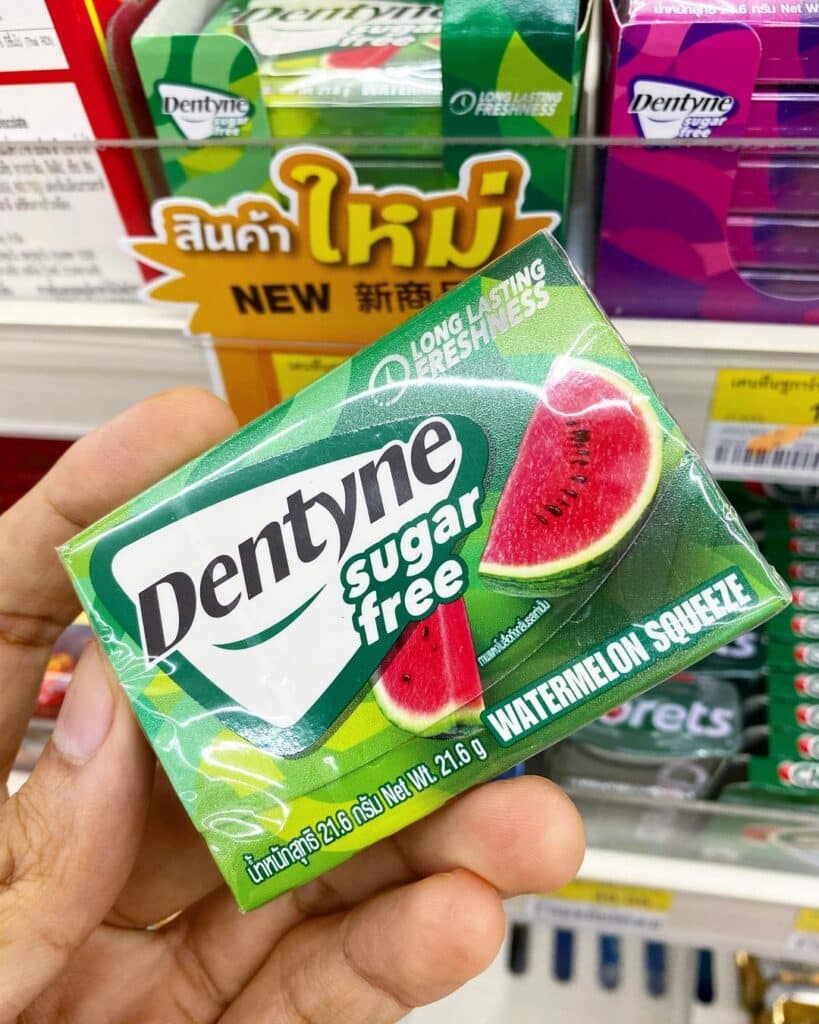
Chewing gum manufactured by Dentyne is sold in several nations throughout the world. Mondelez International owns the product that became iconic 80s gum. Franklin V. Canning, a druggist in New York City, created chewing gum in 1899 and marketed it as a preventative measure for bad breath.
The box stated, “To prevent decay, To sweeten the breath, To maintain tooth whiteness.” The name of Mr. Canning’s new gum, Dentyne, is a mix of the terms “dental” and “hygiene.” The brand was transferred to the American Chicle Company in 1916. Dentyne was created by the Adams Gum Company around the 1930s. One of the businesses that made up the American Chicle Company was Adams.
Ownership eventually transferred to Warner-Lambert Company, which in 2000 merged with Pfizer, and finally to Cadbury.
The original Dentyne was a type of gum that was sugar-filled, cinnamon-flavored breath-refreshing gum. In 2006, Dentyne Classic was pulled from the American and Canadian markets. It was then reintroduced, but in 2019 it was pulled once more.
Peppermint, Arctic Chill, Spearmint, Shiver Mint, Vanilla Frost, Cool Frost, Wild Winter, Intense, and Mint Medley are among the flavors that are now offered. It is important to distinguish between Dentyne Ice gum and Dentyne Ice mints.
Products are accessible outside of the United States. However, they come in different packaging and have more flavors. For instance, the Dentyne Ice Box has nine gum pellets instead of twelve in the Southeast Asian markets and is offered in flavors such as “Mentholyptus,” “Midnight Mint,” and “Snow Mint.”
6. Beech-Nut Gum
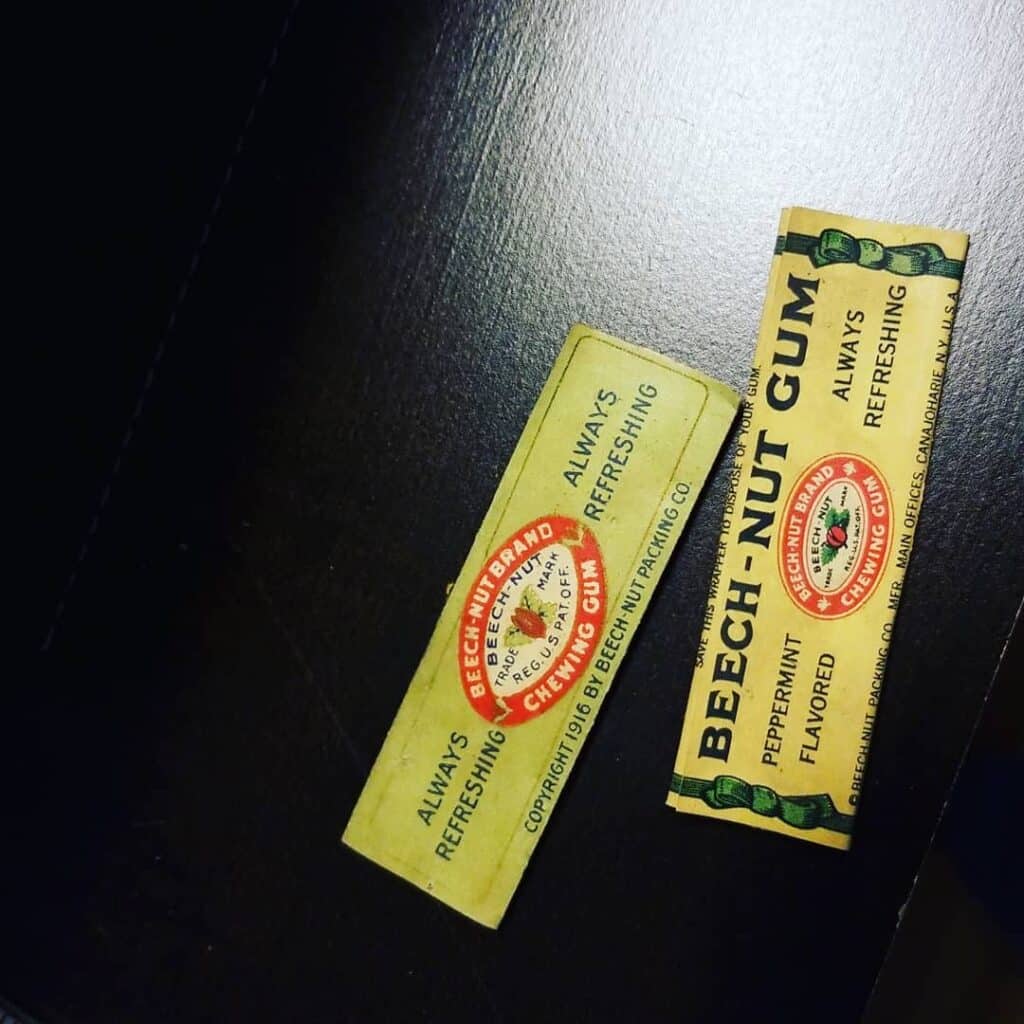
You probably recall purchasing Beech-Nut from one of the outdated gum vending machines outside your neighborhood candy store. Beech-Nut brand draggedees, not sticks, were sold in the 1980s and had a sweet peppery flavor. It was a popular weekly treat in the 1980s. It lasted virtually the entire week since there were five dragees in the group.
The town of Canajoharie, New York, is where the Beech-Nut Company began in 1891. The Imperial Packing Co. was established by Raymond P. Lipe to produce Beech-Nut ham, together with his friend John D. Zieley, his brothers Walter H. Lipe, David Zieley, and Bartlett Arkell. The product was modeled after the smoked hams made by Ephraim Lipe, the Lipes’ farmer father.
The business added peanut butter, jam, pork, beans, ketchup, chili sauce, mustard, spaghetti, macaroni, marmalade, caramel, fruit drops, mints, chewing gum, and coffee to its line of goods throughout the first 25 years of the 20th century.
7. P.K Gum
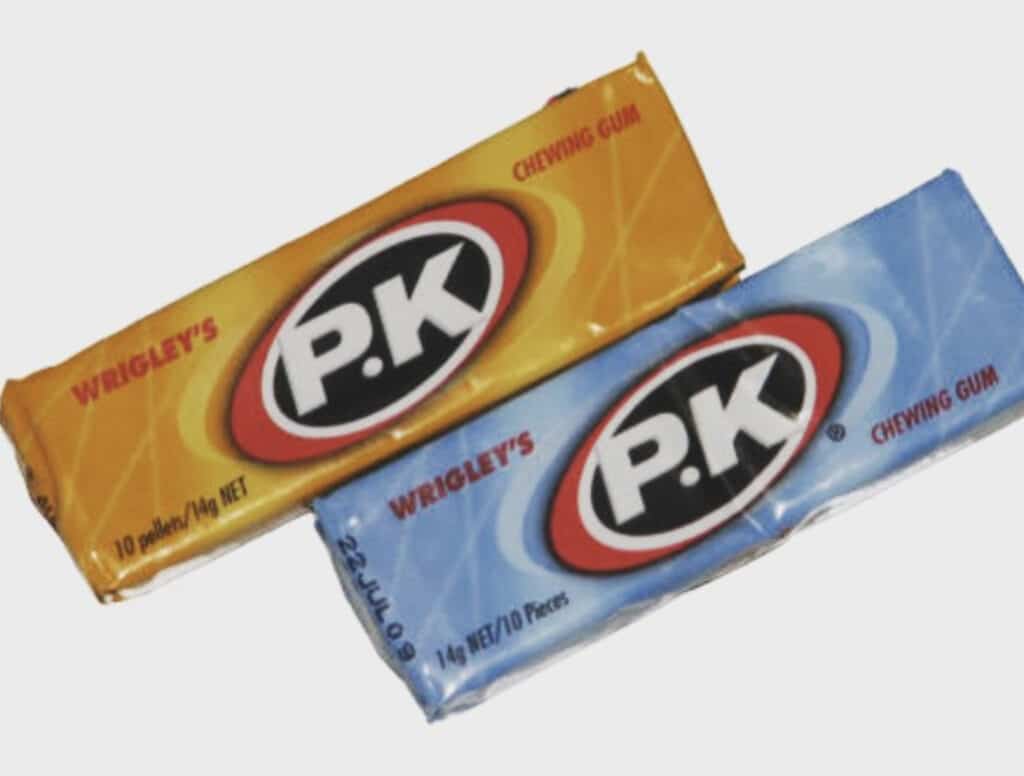
Philip Knight Wrigley, sometimes known as P. K. Wrigley, was an American chewing gum producer and Major League Baseball executive who inherited both of those positions from his much more flamboyant father, William Wrigley Jr. Philip Knight Wrigley first introduced P.K. gum to the mass market in 1927. This appears credible given that Philip was the CEO at the time P.K. was introduced.
There are two explanations for why the well-known 80s gum is referred to as P.K. The well-known chewing gum bears the name of Philip Knight Wrigley, who was the world’s first significant chewing gum producer. According to a different school of thought, the initials P.K. were inspired by the design of the chewing gum box. According to this theory, P stands for package and K stands for a king when combined with Package King.
8. Hubba-Bubba Bubble Gum
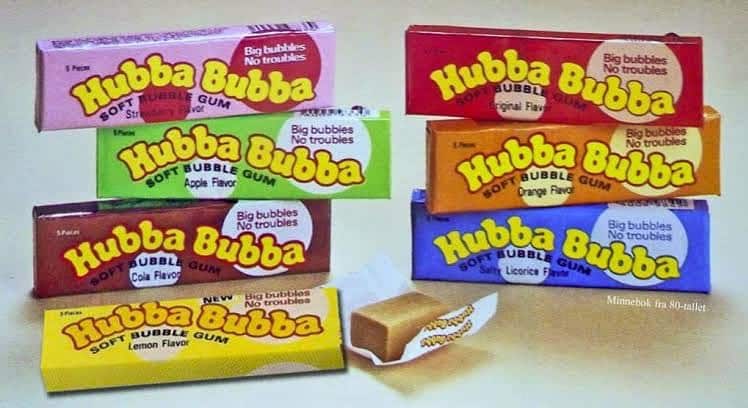
When Walter Diemer developed a formula for bubble gum in 1928, chewing gum assumed a new dimension. Diemer, an accountant for the Fleer chewing gum firm, was rumored to experiment with various gum-related concoctions during his free time. Diemer’s formula for bubble gum was less sticky and more readily stretched than conventional chewing gum.
Hubba Bubba was first made available in 1979 by the Wrigley Company, more than 50 years after the introduction of bubble gum. Hubba bubba soon became a beloved 80s gum. It marked Wrigley’s entry into the bubblegum industry. The term was inspired by the way that World War II troops expressed satisfaction by using the phrase “Hubba Bubba,” according to the company website.
Hubba Wrigley distributed Bubba, a popular 80s gum, in more than 20 countries around the world in the 1980s. The list included Australia, Canada, Croatia, Germany, and the United Kingdom. Wrigley made the decision to leave the American bubble gum industry by the end of the same decade.
Hubba Bubba manufacturing in the United States began in 2004 following a lapse of almost 15 years. The gum was first offered only in chunk form as an alternative to conventional stick gum.
Bottom Line
Fortunately and regrettably, not all gum or candy ideas are successful or last long. However, those chewing gums explored above are exceptions from this. When compared to other countries, the United States alone offered a bewildering variety of 80s gum. Nevertheless, there were a lot of interesting and amusing sweets made in the 1980s that were discontinued and forgotten over time.

Nato is a content writer and researcher with a background in psychology. She’s passionate about writing about the candy industry and exploring the cultural significance of sweets and treats. She believes that the stories behind our favorite snacks can reveal a great deal about our values.
Please leave a review or any memories of this snack in the comments below. Thank you!
Click here for a full A-Z list of Snacks and Candy
